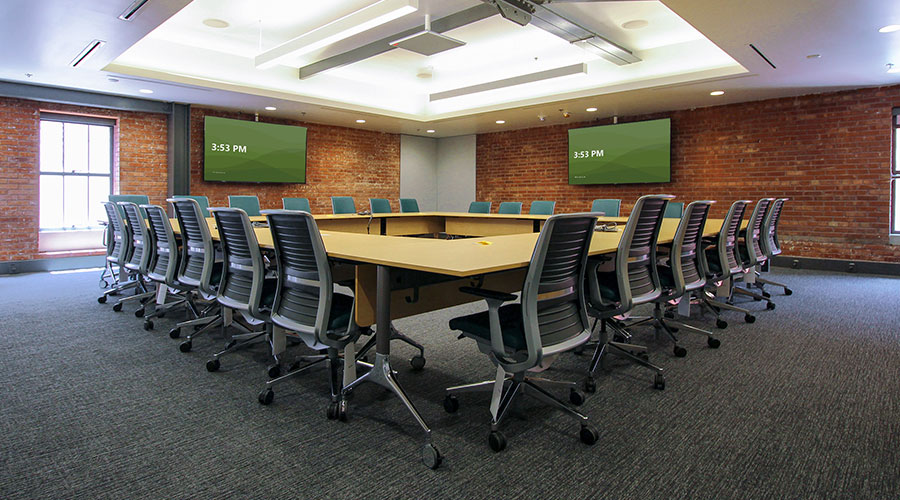
AV Room Types: When to Customize and When to Standardize
Finding the Right Fit Between Flexibility and Repeatability
If your organization has ever tried to roll out meeting rooms across multiple buildings, departments, or campuses, you know how fast things can go from "simple tech update" to "how do we have five different room types for the same use case?"
For enterprise leaders and higher education decision-makers alike, the question isn’t whether to invest in AV—it’s how to do it strategically.
One of the most critical decisions is whether to standardize room types across your organization or customize for every space. The answer, as with most things in AV, is: it depends. But there’s a smart way to balance both.
Why Room Type Standardization Makes Strategic Sense
Standardized room types are pre-engineered, repeatable designs that can be rolled out across locations. Think: huddle rooms, small conference rooms, training spaces, boardrooms. Same core layout. Same tech. Same user experience.
Here’s why leaders are moving toward standardization:
-
Consistent user experience: Every room feels familiar. No steep learning curve, no "how do I start the meeting here?" moments.
-
Reduced IT support burden: Fewer room variations mean fewer one-off issues and easier remote support.
-
Faster deployment: Standard rooms can be designed, quoted, staged, and installed quickly.
-
Budget predictability: Known costs for known spaces = easier to plan across departments or campuses.
-
Easier lifecycle management: You know what’s in each room, when it was installed, and when it needs refreshing.
And with services like Enterprise Program Management (EPM), organizations can take standardization further—ensuring that rooms across cities, countries, or time zones all follow the same playbook.
When Customization Still Matters
That said, not every room should be a copy-paste job. Some spaces have unique requirements:
-
Executive boardrooms with specialized AV or branding
-
Auditoriums and event spaces with complex acoustics or lighting
-
Specialty learning labs in higher ed or research settings
-
Customer experience centers with immersive tech needs
Customization makes sense when the space has:
-
Unique architectural or acoustic needs
-
High-value stakeholders or external audiences
-
Specific integrations with other building systems or workflows
The key is knowing which spaces warrant customization—and resisting the temptation to reinvent the wheel for rooms that don’t.
How to Strike the Balance
Organizations that get this right follow a framework:
-
Define room types that cover 80-90% of spaces (small, medium, large, specialty).
-
Build pre-engineered standards for each type, with approved tech and documentation.
-
Customize intentionally for rooms that are high-profile or technically complex.
-
Roll out consistently, using partners who can scale and support globally.
Standardization doesn’t mean rigidity. It means consistency where it matters, and flexibility where it counts.
Start at the Strategic Level
The decision to standardize isn’t just an AV conversation—it’s an organizational one. And it works best when driven from the top.
Through our Enterprise Program Management model, we help clients define, deploy, and maintain standardized AV environments that save time, reduce cost, and improve performance at scale.
Because whether you're managing 10 rooms or 1,000, the goal is the same: AV that works, everywhere, every time.
Ready to bring consistency and scalability to your AV strategy? Get in touch with our team to start the conversation.

